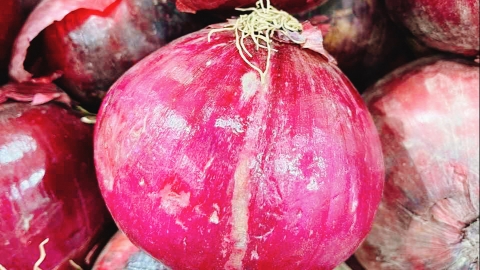Can clams and onions be eaten together?
Generally speaking, clams and onions can be consumed together, but intake should be controlled. The specific analysis is as follows:

Clams are rich in protein, minerals, and vitamins, and have effects of nourishing yin, moistening dryness, promoting diuresis, and reducing edema. Onions are rich in vitamin C, cellulose, and sulfides, which can promote digestion and possess antibacterial and anti-inflammatory properties. Dishes such as stir-fried clams with onions can be prepared by combining the two ingredients, which not only enhances flavor but also provides nutritional benefits. However, note that clams must be thoroughly cooked to avoid food poisoning, and onions should be used in moderation to prevent overpowering the natural taste of the clams.
Clams are cold in nature, while onions are pungent in flavor, and their combination may irritate the stomach, potentially causing abdominal pain or indigestion. Especially for individuals with sensitive gastrointestinal systems, consumption should be moderated and cooking methods carefully considered. It is recommended to sauté the onions until translucent and fragrant before quickly stir-frying with clams to avoid excessive heat exposure that may lead to nutrient loss. Additionally, when combining clams with onions, avoid consuming them with other cold-natured foods or those high in tannins, which may increase gastrointestinal burden or interfere with nutrient absorption.
Patients with hypertension may consume clams and onions in moderation, but should follow the principles of low salt and low fat intake, avoiding excessive use of seasonings. Individuals allergic to seafood or onions should avoid eating them to prevent allergic reactions. Moreover, both clams and onions contain certain amounts of oxalic acid; excessive consumption may affect calcium absorption or lead to the formation of calcium oxalate precipitates. It is recommended to consume them in appropriate amounts and drink plenty of water to promote metabolism.





